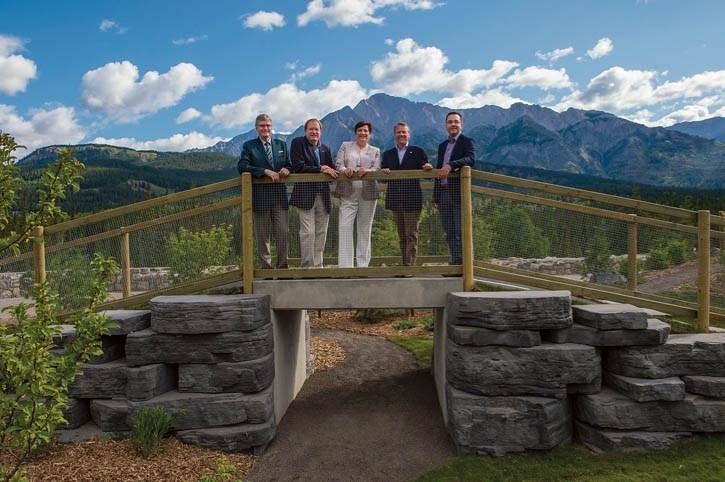Parks Canada is replacing aging wildlife fencing along the Trans-Canada Highway in Banff National Park to do a better job of keeping animals off the road and widening the Bow Valley Parkway to make it safer for cyclists and motorists.
The federal government announced last week an injection of $117 million for Banff National Park, $44 million for Kootenay National Park and $62 million for Yoho National Park – part of $500 million in highway spending across all mountain parks announced last November.
Officials say this is the largest federal infrastructure plan in Parks Canada’s history. More spending announcements are expected in the coming months in the lead up to the federal election in October.
“Investments such as these will across Canada support the tourism industry and enhance visitor experience,” said Blake Richards, MP for Banff-Airdrie.
In Banff, $26 million will go toward replacing existing wildlife fencing along the Trans-Canada from the park’s east gate to Sunshine Village road and rehabilitate some of the fencing between Sunshine and the Banff-Yoho boundary.
Major components of the project include improved wildlife fencing alignments, current standard fencing components, patrol trails, access gates, connections to wildlife structures, jump outs, Texas gates and electro-mats, signs and remote wildlife cameras.
Another $67 million goes toward widening Bow Valley Parkway to make it safer for motorists and cyclists and $24.5 million to pave portions of the Trans-Canada from the park’s east gate to Castle Junction.
The Bow Valley Parkway work includes sections of guardrail replacement or repair, rock and slope stabilization, and the addition of paved shoulders.
In Yoho National Park, $62 million will go towards several projects, including new signage leading to Takakkaw Falls, re-paving Emerald Lake Road and re-paving and associated highway safety work along the Trans-Canada.
Kootenay National Park will see $44 million spent on highway work, repair and rehabilitation work at Radium Hot Springs and emergency flood response work on Kootenay National Park’s bridges, campgrounds and day use areas.
Some of the funding announced was already spent on flood-related projects last year, including on a new trail bridge across Vermilion River to the Paint Pots, and for access to Stanley Glacier.
Jim Pissot, executive director of WildCanada Conservation Alliance, said replacing the wildlife fencing along the Trans-Canada between the east gate and Sunshine turnoff is great news.
“It’s an example of how the wildlife mitigations on the Trans-Canada Highway have been a learning process,” he said. “That first section built, we either didn’t fully understand or appreciate the ability of animals to tunnel under, so we have buried fence aprons on the next sections.”
Pissot said fence replacement and upgrades should include a design to prevent bears from climbing fences. There are reports several times each year of bears making it onto the highway.
“As long as Parks Canada continues to cultivate tasty dandelions on the right-of-way, there will be a temptation for bears to climb that fence, and we know they can because it’s just like a ladder,” he said.
“This wildlife fencing retrofit really ought to include outriggers – and there are different designs out there – at the top of the fence to discourage bears from climbing.”
The Association for Mountain Parks Protection and Enjoyment (AMPPE) welcomed the funding announcements.
“AMPPE was thrilled to hear about the infrastructure funding,” said Casey Peirce, the group’s executive director. “It will help improve the experience for visitors to the mountain parks.”
Peirce said she was pleased to hear about the addition of paved shoulders on Bow Valley Parkway, which is seeing a growing of number of cyclists.
“It’s such a growing sport in North America, and this work will enhance the safety of the experience on the parkway. It’s an incredible ride and is one of my personal favourites,” she said.
Peirce said there is still more work to be done on fixing infrastructure damaged in floods across national and provincial mountain parks, from Kananaskis Country to Banff and Kootenay.
“This funding will help replace what was broken and enhance what was there previously,” she said.
“It will bring better visitor experience opportunities to hikers and bikers and people who want to get out there.”




